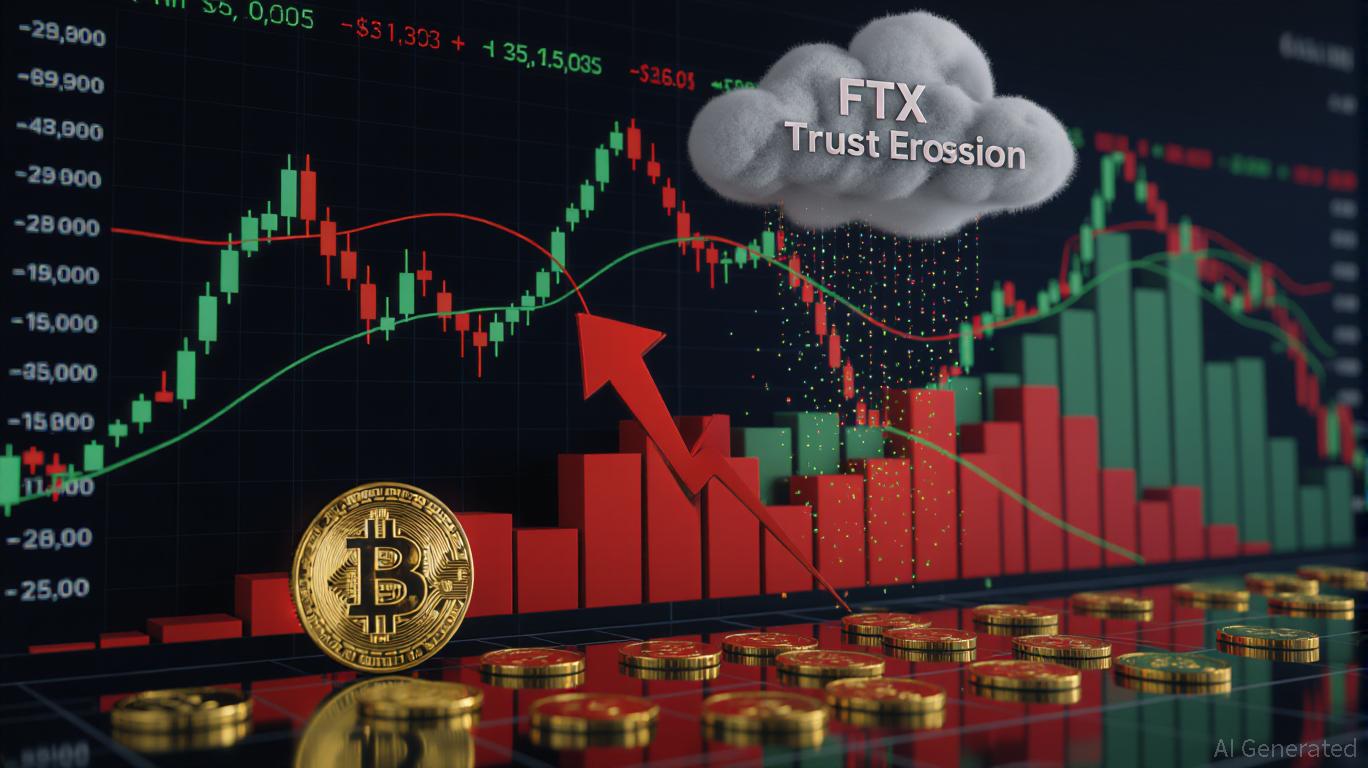The Unexpected Bitcoin Plunge in November 2025: Causes Behind the Drop and Future Prospects for Cryptocurrency Investors
- The November 2025 BTC crash resulted from Fed tightening, lingering FTX trust erosion, and institutional outflows. - Fed's hawkish liquidity controls and inflation focus created toxic conditions for Bitcoin's low-rate-dependent market. - FTX's unresolved $7.1B payouts and $20B institutional exodus since 2022 amplified panic selling through trust deficits. - Crypto investors must now wait for Fed policy clarity and prioritize transparent platforms with regulatory compliance.
The Fed’s Hawkish Posture: The Unseen Driver
In November 2025, the Federal Reserve’s moves, while not directly raising rates, indicated a preference for tighter policy that unsettled riskier assets.
Even though no rate increase was announced in November, the Fed’s emphasis on liquidity management and rate oversight sent a strong signal: monetary tightening was not over. For Bitcoin, which generally benefits from low interest rates, this hawkish approach created a challenging environment. As expectations of higher borrowing costs grew, risk aversion intensified, leading to a rapid sell-off in BTC.
FTX’s Lingering Trust Deficit: An Ongoing Burden
Three years after the FTX collapse, the crypto sector still faces a significant trust gap. Despite efforts to increase transparency and implement proof-of-reserves, FTX creditors have yet to be fully repaid.
The psychological scars from FTX’s downfall remain deep. Even as the market recovered, many institutions chose to withdraw from centralized exchanges altogether, moving assets to self-custody or converting to fiat.

Institutional Withdrawals: The Tipping Point
The November downturn was further intensified by a surge in institutional withdrawals. While precise data for 2025 is still being compiled, trends from 2022 show that declining trust and economic stress often prompt large-scale redemptions. With the Fed signaling more tightening and the FTX fallout unresolved, institutions began reducing their crypto holdings to safeguard assets. This move toward safety, combined with diminished liquidity post-FTX, triggered a downward spiral.
What Lies Ahead for Crypto Investors?
For those managing risk in crypto, moving forward will require both patience and vigilance. Consider these strategies for the next stage:
- Await Clear Signals from the Fed: The Federal Reserve’s meeting in December 2025 will be crucial.
Should the central bank indicate a pause in tightening, Bitcoin may find support. Investors should keep an eye on the repo facility’s performance and overall liquidity conditions.
- Monitor Efforts to Restore Trust: Platforms that consistently provide transparency—such as real-time proof-of-reserves audits—will become more attractive.
Steer clear of exchanges with unresolved financial obligations.
- Broaden Portfolio Exposure: Consider allocating funds to crypto assets with solid fundamentals and clear regulatory standing, like Bitcoin ETFs or high-quality stablecoins.
Conclusion
The Bitcoin crash in November 2025 was the result of both tightening global monetary policy and persistent structural weaknesses in crypto. While the Fed’s hawkish stance and the lingering effects of FTX were immediate triggers, the broader takeaway is that crypto markets are now deeply intertwined with global economic trends. For investors, the challenge is to balance hope with caution—waiting for a shift in Fed policy and for the crypto industry to rebuild its foundation of trust.
Disclaimer: The content of this article solely reflects the author's opinion and does not represent the platform in any capacity. This article is not intended to serve as a reference for making investment decisions.
You may also like
Are we approaching the conclusion of Tim Cook’s leadership at Apple?
Beloved San Francisco feline’s passing intensifies backlash against Waymo
‘Purchase Now and Pay Later’ is rapidly gaining ground, and this is a cause for concern for all
Bitcoin News Today: As cryptocurrency earnings decline, Bitcoin miners shift focus to AI
- Bitcoin miners pivot to AI infrastructure as crypto profits decline, with Bitfarms planning to shut down mining by 2027 and retrofit facilities with Nvidia GPUs. - Industry leaders like Cipher Mining and Digi Power X secure AI deals with AWS/Microsoft, driven by Bitcoin's near-break-even hash price and thinning margins. - Political ties emerge as Scaramucci family invests $100M+ in American Bitcoin , highlighting crypto's role in cross-partisan financial strategies despite equipment controversies. - Anal